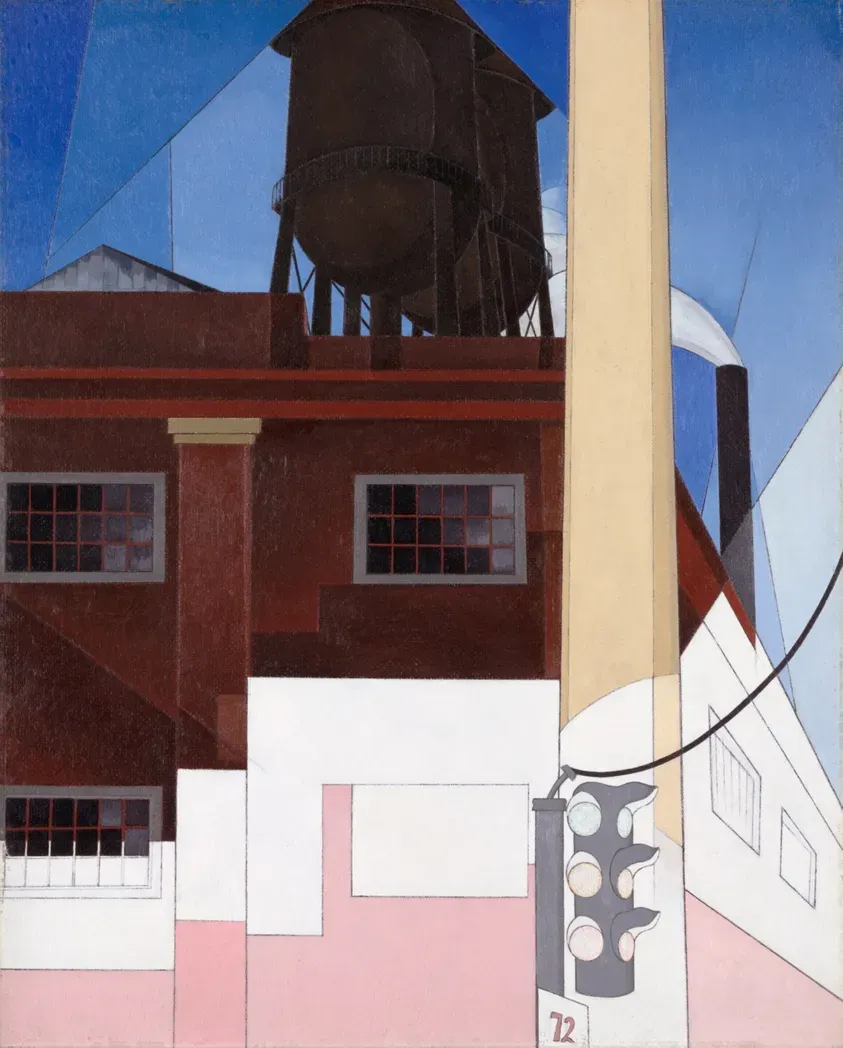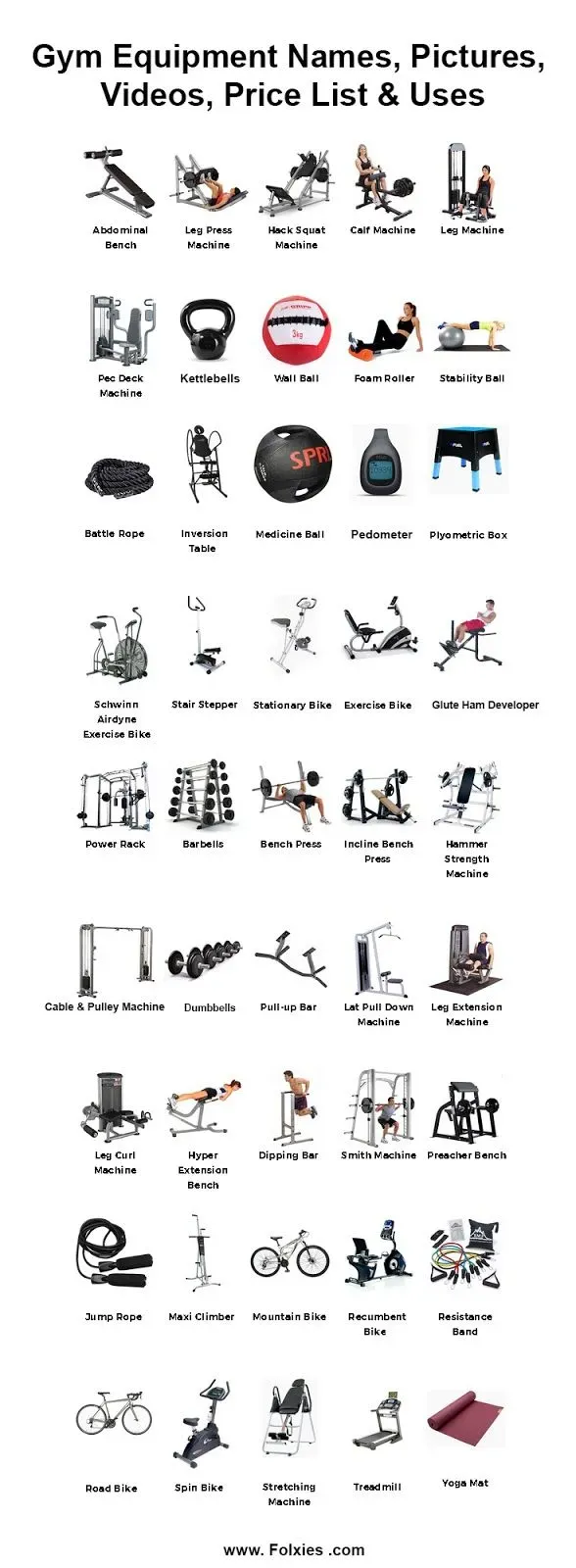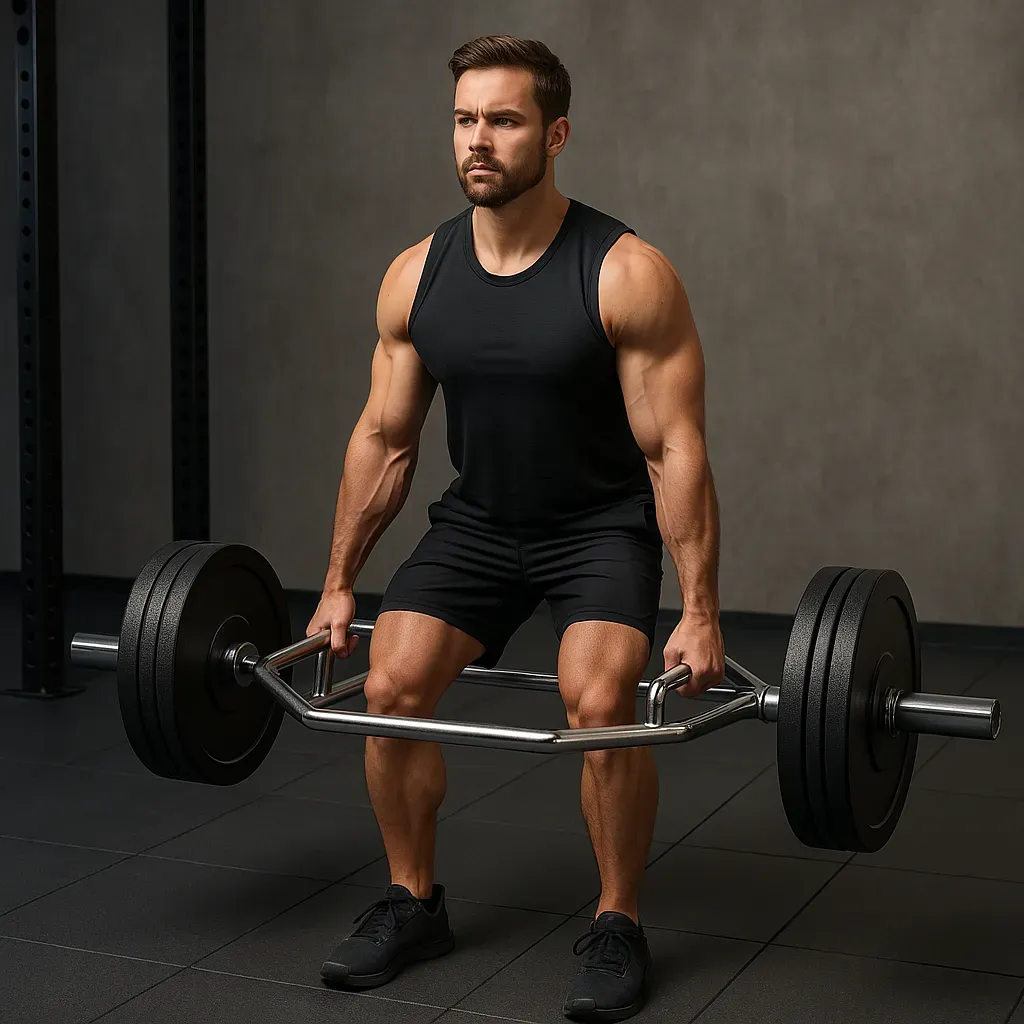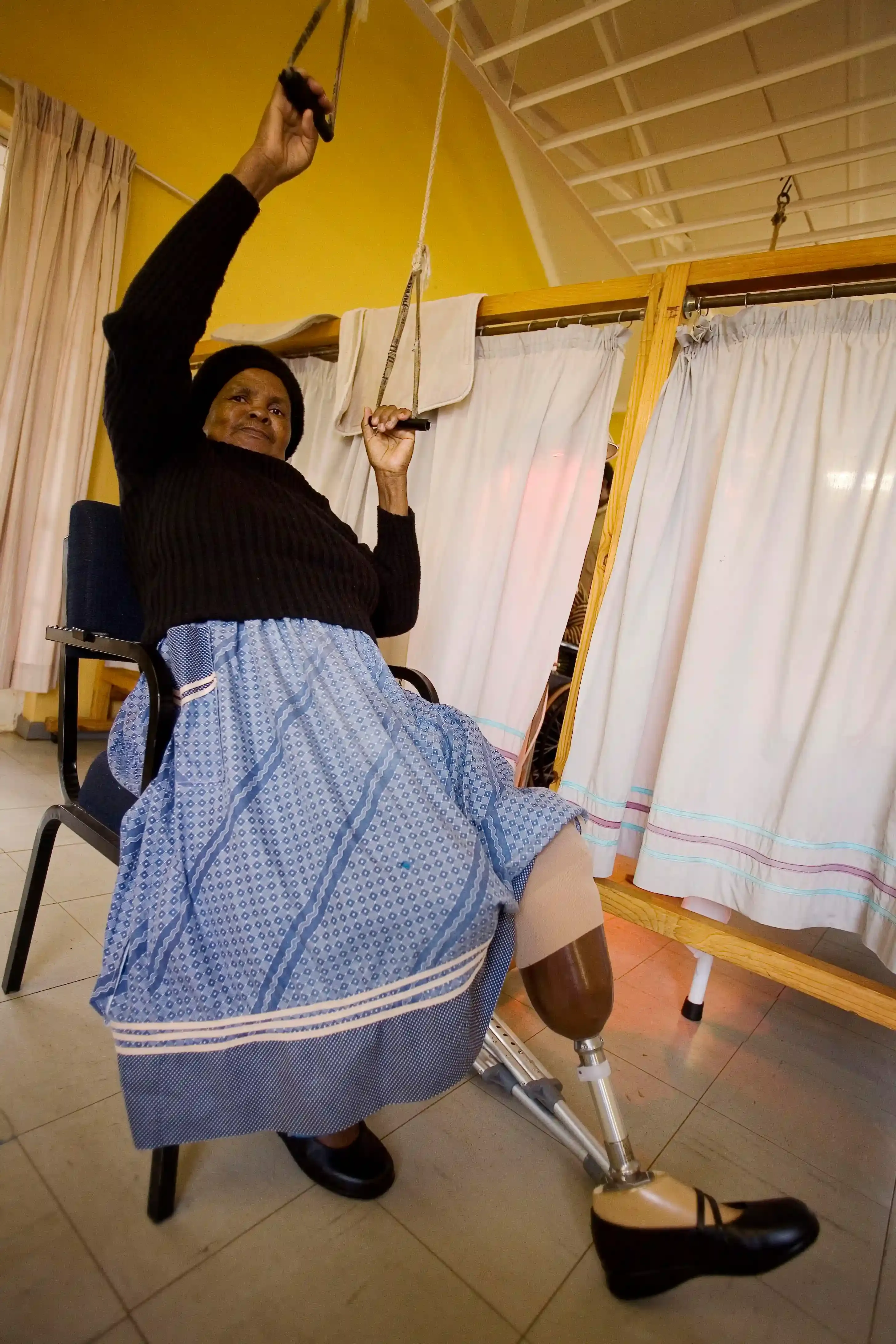Table of Contents
Stepping into the world of home gyms can feel like learning a new language. You hear terms like "squat rack," "kettlebell," "TRX," and suddenly your dream of ditching the crowded commercial gym feels a bit overwhelming. What exactly *are* all these things? And more importantly, which ones do you actually need? Understanding the names of home gym equipment is the first hurdle. It’s not just about having gear; it’s about having the *right* gear for *your* goals and space.
Essential Strength Equipment: Names of Home Gym Equipment for Building Muscle
Essential Strength Equipment: Names of Home Gym Equipment for Building Muscle
Starting Strong: The Bare Bones for Building
Alright, let's talk turkey. If you're serious about building muscle at home without shelling out for a full commercial setup, you need a few core pieces. We're talking the absolute essential strength equipment. First up, you'll likely want some kind of barbell and weight plates. This combo is the backbone of so many fundamental exercises: squats, deadlifts, bench presses. Yeah, you need a bench too. A solid, adjustable bench is gold. Don't skimp here; a wobbly bench is just asking for trouble. Then there are dumbbells. Adjustable ones save space, but a range of fixed weights is nice if you have the room. These let you hit muscles from different angles than a barbell. These are the foundational names of home gym equipment for hitting major muscle groups hard.
Stepping Up Your Strength Game
Once you've got the barbell, bench, and dumbbells sorted, you might look at adding a few more key pieces of essential strength equipment. A power rack or squat rack is a game-changer, especially if you're lifting heavy weights solo. It provides safety features like spotter arms. It's not just for squats, either; you can do presses inside, hang resistance bands, and attach pull-up bars. Kettlebells are another fantastic addition. They work slightly differently than dumbbells, great for swings, snatches, and getting some conditioning work in alongside your strength. These items expand your exercise library significantly and are crucial names of home gym equipment for a comprehensive strength program.
So, what does this core list look like?
- Barbell (Olympic standard is a good bet)
- Weight Plates (Start with a mix, build up over time)
- Weight Bench (Adjustable is best)
- Dumbbells (Adjustable or a set of pairs)
- Power Rack or Squat Rack (For safety and versatility)
- Kettlebells (Maybe one or two to start)
Beyond the Barbell: More Names of Home Gym Equipment for Cardio and Specialty Training
Beyond the Barbell: More Names of Home Gym Equipment for Cardio and Specialty Training
Getting Your Heart Pumping: Cardio Names of Home Gym Equipment
so you've got your strength game sorted with the iron. But let's be real, you probably want to get your heart rate up too. Cardio isn't just about running circles in your garage. There are tons of names of home gym equipment designed to make you sweat without needing a track. Treadmills are the obvious one, good for pounding pavement indoors, but they eat up space and can be loud. Elliptical machines offer a lower-impact option, easier on the joints, but they feel... well, like an elliptical to some people.
Rowing and Riding: More Cardio Options
If you want a full-body cardio blast, a rowing machine is tough to beat. It works your legs, core, back, and arms – a real grinder. Exercise bikes are another classic. You've got upright bikes, recumbent bikes (like sitting in a comfy chair but working), and spin bikes that mimic road cycling. Pick one that fits your preferred torture method and your space. Just remember, a cheap bike seat is a special kind of agony. Adding one of these means you're not just strong, you've got some endurance too.
- Treadmill: Good for runners, big footprint.
- Elliptical: Low impact, full body (sort of).
- Rowing Machine: Full body, excellent conditioning.
- Exercise Bike (Various types): Spin, upright, recumbent - pick your poison.
Diving into Specialty Gear
Now, beyond the basics and cardio, there are names of home gym equipment that target specific movements or add unique challenges. Think about things like a landmine attachment. It slips onto a barbell and lets you do rotational movements, presses, and rows with a fixed pivot point. Or maybe a trap bar (or hex bar). It's fantastic for deadlifts if a straight bar feels awkward, placing the weight in line with your body. These aren't strictly necessary for everyone, but they can be game-changers for working around limitations or adding variety you can't get with just barbells and dumbbells. They help you build a more well-rounded home gym setup.
Small Gear, Big Impact: Accessories and Support Equipment
Small Gear, Big Impact: Accessories and Support Equipment
The Stuff That Keeps It Together (Literally)
you've got the big iron, the things that make noise and take up space. But honestly, some of the most crucial pieces of home gym equipment are the small things you shove in a corner or toss in a bucket. We're talking about barbell collars – those little clips or clamps that stop your weight plates from sliding off and crashing onto your foot. Seriously, do not lift without these. Then there are lifting straps. They help you grip heavier weights on pulls like deadlifts or rows when your grip gives out before your muscles. And chalk? If your hands get sweaty, a little chalk makes a world of difference for grip security. These aren't flashy names of home gym equipment, but they prevent accidents and help you lift more effectively.
Strapping In and Lacing Up
Moving up slightly in size, consider support gear. A good lifting belt isn't just for showing off or protecting a bad back; it helps you brace your core properly on heavy lifts like squats and deadlifts. It gives you something to push your abs into, increasing intra-abdominal pressure for stability. And lifting shoes? They aren't your running sneakers. Squat shoes often have a raised heel for better depth and a super stable, flat sole. Deadlift slippers or flat-soled shoes provide maximum contact with the floor. These pieces of names of home gym equipment directly impact your form and lifting potential.
- Barbell Collars: Non-negotiable for safety.
- Lifting Straps: Extend your grip strength on heavy pulls.
- Chalk: Improve grip, reduce slippage.
- Lifting Belt: Aids core bracing for heavy lifts.
- Lifting Shoes: Provide stability specific to lifts.
- Resistance Bands: Versatile for warm-ups, accessory work, stretching.
More Bang for Your Buck in Small Packages
Don't underestimate the power of simple, portable names of home gym equipment. Resistance bands, for example, are incredibly versatile. You can use them for warm-ups, stretching, adding accommodating resistance to barbell lifts, or doing entire workouts with them. They take up zero space and travel easily. A jump rope is another classic. It's a fantastic cardio tool that fits in your pocket. Five minutes of intense skipping will humble anyone who thinks cardio needs a machine the size of a small car. These small items fill gaps in your training and are way cheaper than another set of dumbbells.
Finishing Strong: Recovery Tools and Keeping Your Space Tidy
Finishing Strong: Recovery Tools and Keeping Your Space Tidy
Healing Up: Names of Home Gym Equipment for Recovery
Look, lifting heavy or pushing hard isn't the whole story. What you do *after* the workout matters just as much, maybe more. Your body needs help bouncing back, and there are specific names of home gym equipment designed for just that. Foam rollers are probably the most common. They're basically torture tubes you roll on to mash out sore spots. It hurts, sure, but it helps with muscle tightness. Then there are massage guns. Point this vibrating jackhammer at a tight muscle, and it feels like it's trying to drill through bone, but the relief afterward can be significant. Don't expect miracles, but they can help loosen things up.
Cold Plunges and Mobility Aids
For the truly dedicated (or slightly masochistic), a cold tub is becoming more popular in home gyms. Dunking yourself in freezing water after a tough session? Yeah, it's rough, but some swear by it for reducing inflammation and speeding recovery. Mobility tools like lacrosse balls or specialized stretching straps also fall into this category of names of home gym equipment. They help you work on range of motion and get into those stubborn tight areas the foam roller can't quite reach. Recovery isn't glamorous, but it's non-negotiable if you want to keep training consistently.
- Foam Roller: Essential for self-myofascial release.
- Massage Gun: Targeted relief for sore muscles.
- Cold Tub: For the brave, aims to reduce inflammation.
- Lacrosse Ball/Mobility Tools: Pinpoint tightness and improve range of motion.
Keeping Order: Storage and Organization Gear
you've got all this gear, these various names of home gym equipment filling your space. Now what? Leaving barbells and plates scattered everywhere is a tripping hazard waiting to happen. Organization isn't just about looking neat; it's about safety and efficiency. Plate trees are simple stands that hold your weight plates vertically, saving floor space. Dumbbell racks keep your pairs off the ground and in order. Barbell holders mount on the wall or stand alone to keep your bars from rolling around. Chalk bowls or buckets keep that messy white stuff contained. Investing in a little storage makes your home gym safer and way more functional.
Building Your Arsenal: Beyond Just Knowing the Names
So, you've navigated the landscape of home gym equipment names. You know a barbell isn't just a stick, and a kettlebell isn't merely a cannonball with a handle. Understanding these pieces is step one. The real work? Figuring out what fits your training, your budget, and the square footage you can realistically dedicate. Don't feel pressured to buy everything at once. Start with the basics, the gear that gives you the most bang for your buck, and build from there. A truly effective home gym isn't about collecting every shiny object; it's about curating a space that supports consistent, challenging work. Now go put that knowledge to use.